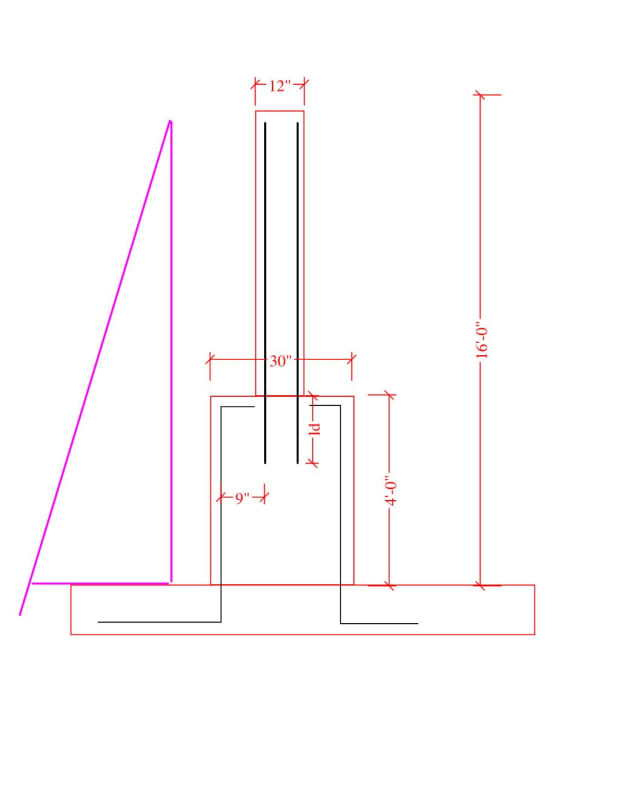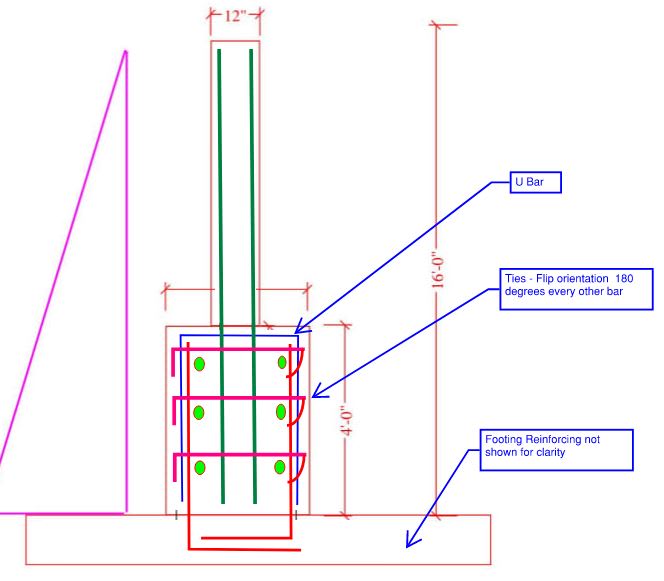BAGW
Structural
- Jul 15, 2015
- 392
Hi,
I have cantilever wall with dimensions shown below. When the 12" wall sits on the 30" wall, I am fully developing the rebars in the 12" wall into the 30" wall to transfer the moment. The rebars in the 30" wall are sized to continue the applied moment. My question should the rebar at the 12" wall be spliced with the rebar's of the 30" wall? Technically, the bars cannot be spliced as they are 9" apart (exceeds ACI limits). Will developing the rebars in the 12" wall into 30" wall suffice?
Thanks

I have cantilever wall with dimensions shown below. When the 12" wall sits on the 30" wall, I am fully developing the rebars in the 12" wall into the 30" wall to transfer the moment. The rebars in the 30" wall are sized to continue the applied moment. My question should the rebar at the 12" wall be spliced with the rebar's of the 30" wall? Technically, the bars cannot be spliced as they are 9" apart (exceeds ACI limits). Will developing the rebars in the 12" wall into 30" wall suffice?
Thanks



